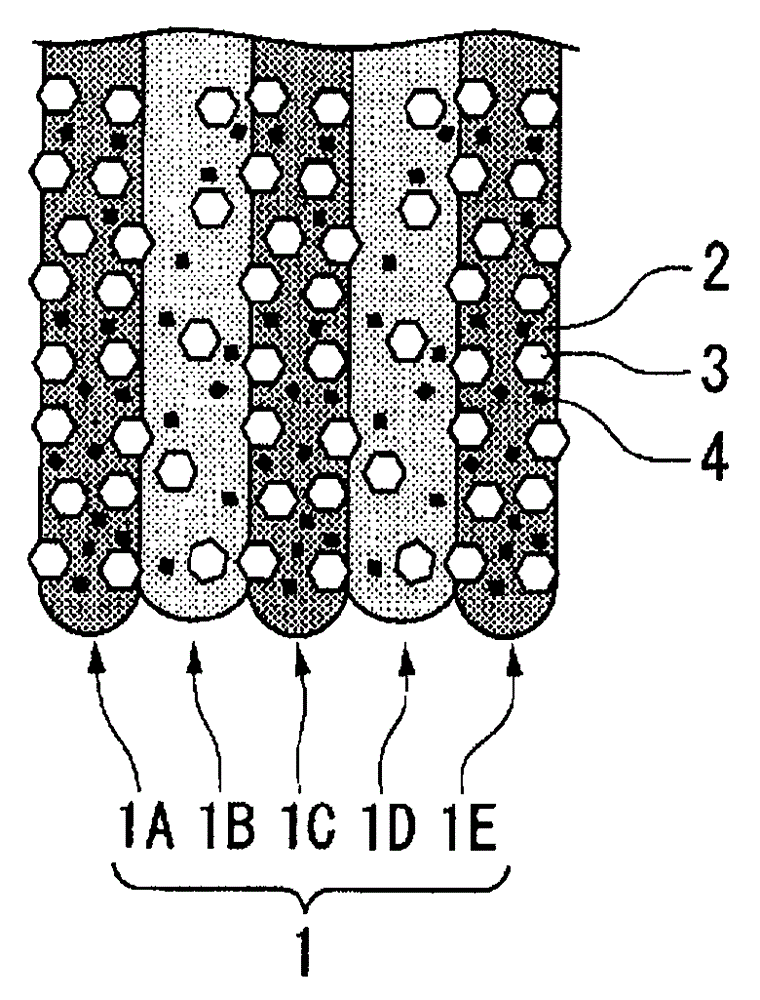Electroforming thin blade grinding wheel
A technology of thin blades and grinding wheels, applied in the direction of abrasives, bonded grinding wheels, metal processing equipment, etc., can solve the problems of inability to cut off, low concentration of abrasive grains, peeling, etc., to achieve wear resistance, prolong the life of grinding wheels, and good The effect of sharpness
- Summary
- Abstract
- Description
- Claims
- Application Information
AI Technical Summary
Problems solved by technology
Method used
Image
Examples
Embodiment
[0037]Next, more specific examples will be given to describe the effects of the present invention. In this example, by using the electroformed thin-edged grinding wheel based on the above-mentioned embodiment, image 3 Cutting of the LED workpiece 13 composed of a glass epoxy resin substrate 12 having metal (Cu) electrodes 11 as shown, measured the size of the burr 14 generated from the electrode 11 at the initial stage of cutting and at the time of 50m cutting (wherein, Such as image 3 As shown, X is the size of the burrs 14 extending in the lateral direction (feed direction), and Y is the size of the burrs 14 extending in the downward direction. ). The results are referred to as Example 1, and are shown in Table 1 together with the abrasive grain content in the first to fifth abrasive grain layers of the thin-edged abrasive grain layer. In addition, the reference numeral 15 part of the LED workpiece 13 is made of epoxy resin.
[0038] Among them, in this embodiment 1, t...
PUM
 Login to View More
Login to View More Abstract
Description
Claims
Application Information
 Login to View More
Login to View More - R&D
- Intellectual Property
- Life Sciences
- Materials
- Tech Scout
- Unparalleled Data Quality
- Higher Quality Content
- 60% Fewer Hallucinations
Browse by: Latest US Patents, China's latest patents, Technical Efficacy Thesaurus, Application Domain, Technology Topic, Popular Technical Reports.
© 2025 PatSnap. All rights reserved.Legal|Privacy policy|Modern Slavery Act Transparency Statement|Sitemap|About US| Contact US: help@patsnap.com



